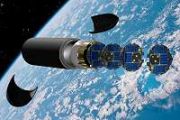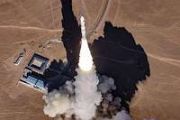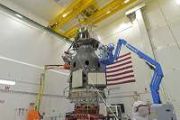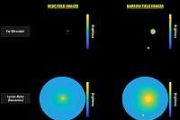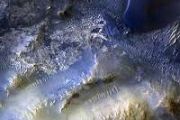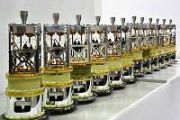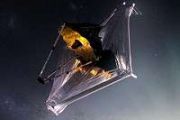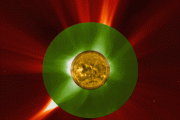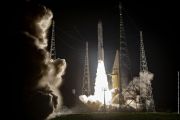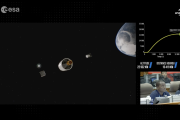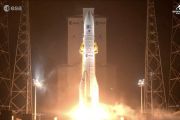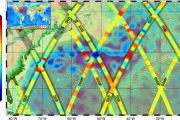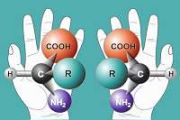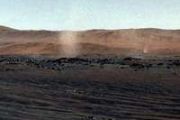
Copernical Team
Momentus announces $4M direct offering priced at-the-market under Nasdaq rules
 Momentus Inc. (NASDAQ: MNTS) has entered into a securities purchase agreement with certain institutional investors for the purchase and sale of 2,000,000 shares of common stock (or common stock equivalents in lieu thereof) at a purchase price of $2.00 per share pursuant to a registered direct offering priced at-the-market under Nasdaq rules, resulting in total gross proceeds of approximately $4
Momentus Inc. (NASDAQ: MNTS) has entered into a securities purchase agreement with certain institutional investors for the purchase and sale of 2,000,000 shares of common stock (or common stock equivalents in lieu thereof) at a purchase price of $2.00 per share pursuant to a registered direct offering priced at-the-market under Nasdaq rules, resulting in total gross proceeds of approximately $4 Keysight launches phased array antenna control and calibration solution
 Keysight Technologies, Inc. (NYSE: KEYS) introduces the new Phased Array Antenna Control and Calibration solution, a breakthrough over-the-air (OTA) calibration and characterization solution that enables satellite designers developing active electronically scanned arrays for satellite communications applications to rapidly test their designs during early validation.
Modern satellite networ
Keysight Technologies, Inc. (NYSE: KEYS) introduces the new Phased Array Antenna Control and Calibration solution, a breakthrough over-the-air (OTA) calibration and characterization solution that enables satellite designers developing active electronically scanned arrays for satellite communications applications to rapidly test their designs during early validation.
Modern satellite networ Bursts of star formation explain mysterious brightness at cosmic dawn
 When scientists viewed the James Webb Space Telescope's (JWST) first images of the universe's earliest galaxies, they were shocked. The young galaxies appeared too bright, too massive and too mature to have formed so soon after the Big Bang. It would be like an infant growing into an adult within just a couple years.
The startling discovery even caused some physicists to question the stand
When scientists viewed the James Webb Space Telescope's (JWST) first images of the universe's earliest galaxies, they were shocked. The young galaxies appeared too bright, too massive and too mature to have formed so soon after the Big Bang. It would be like an infant growing into an adult within just a couple years.
The startling discovery even caused some physicists to question the stand Light rocks on deck, gray rocks in the hole: Sols 3966-3697
 Earth planning date: Wednesday, October 2, 2023: HiRISE images of Gale crater show that Curiosity is driving through a section of layered rocks on Mt. Sharp, and the layers consist of alternating bands of light and gray/dark rocks. What causes the color variation of these rocks that makes this terrain look banded from orbit?
It may relate to differences in the composition or chemistry of t
Earth planning date: Wednesday, October 2, 2023: HiRISE images of Gale crater show that Curiosity is driving through a section of layered rocks on Mt. Sharp, and the layers consist of alternating bands of light and gray/dark rocks. What causes the color variation of these rocks that makes this terrain look banded from orbit?
It may relate to differences in the composition or chemistry of t A prehistoric cosmic airburst preceded the advent of agriculture in the Levant
 Agriculture in Syria started with a bang 12,800 years ago as a fragmented comet slammed into the Earth's atmosphere. The explosion and subsequent environmental changes forced hunter-gatherers in the prehistoric settlement of Abu Hureyra to adopt agricultural practices to boost their chances for survival.
That's the assertion made by an international group of scientists in one of four relat
Agriculture in Syria started with a bang 12,800 years ago as a fragmented comet slammed into the Earth's atmosphere. The explosion and subsequent environmental changes forced hunter-gatherers in the prehistoric settlement of Abu Hureyra to adopt agricultural practices to boost their chances for survival.
That's the assertion made by an international group of scientists in one of four relat Orbit Fab appoints Chief Engineer, advances refueling system test capabilities
 Orbit Fab, the leading provider of on-orbit refueling services, has named industry veteran Kevin Smith as the company's Chief Engineer, who will lead the Systems, Electrical, Fluids, and Mechanical engineering teams and internal development, testing and overall readiness of RAFTI and GRIP in-space fueling systems.
Fresh off his most recent stint as Senior Propulsion Engineer at Astrobotic,
Orbit Fab, the leading provider of on-orbit refueling services, has named industry veteran Kevin Smith as the company's Chief Engineer, who will lead the Systems, Electrical, Fluids, and Mechanical engineering teams and internal development, testing and overall readiness of RAFTI and GRIP in-space fueling systems.
Fresh off his most recent stint as Senior Propulsion Engineer at Astrobotic, New center will lay groundwork for better space weather forecasts
 A new center led by CU Boulder will undertake research to make the region of space between Earth and the moon a little safer-potentially helping satellites navigate through this tumultuous and sometimes hazardous environment.
This summer, NASA announced that it had selected four Space Weather Centers of Excellence, including the Space Weather Operational Readiness Development (SWORD) cente
A new center led by CU Boulder will undertake research to make the region of space between Earth and the moon a little safer-potentially helping satellites navigate through this tumultuous and sometimes hazardous environment.
This summer, NASA announced that it had selected four Space Weather Centers of Excellence, including the Space Weather Operational Readiness Development (SWORD) cente Firefly Aerospace completes Blue Ghost Lunar Lander Structure
 Firefly Aerospace, an end-to-end space transportation company, has completed the development and assembly of its Blue Ghost lander structure and fluid systems, a critical milestone for Firefly's first lunar mission slated to land on the Moon in 2024 as part of NASA's Commercial Lunar Payload Services (CLPS) initiative. This mission is one of three task orders Firefly has won under NASA CLPS, acc
Firefly Aerospace, an end-to-end space transportation company, has completed the development and assembly of its Blue Ghost lander structure and fluid systems, a critical milestone for Firefly's first lunar mission slated to land on the Moon in 2024 as part of NASA's Commercial Lunar Payload Services (CLPS) initiative. This mission is one of three task orders Firefly has won under NASA CLPS, acc Massive low earth orbit communications satellites could disrupt astronomy
 Observations of the BlueWalker 3 prototype satellite show it is one of the brightest objects in the night sky, outshining all but the brightest stars.
Astronomers have raised concerns that without mitigation, groups of large satellites could disrupt our ability to observe the stars from Earth and perform radio astronomy.
Several companies are planning 'constellations' of satellites -
Observations of the BlueWalker 3 prototype satellite show it is one of the brightest objects in the night sky, outshining all but the brightest stars.
Astronomers have raised concerns that without mitigation, groups of large satellites could disrupt our ability to observe the stars from Earth and perform radio astronomy.
Several companies are planning 'constellations' of satellites - SpaceX aims for its 50th Space Coast launch this year
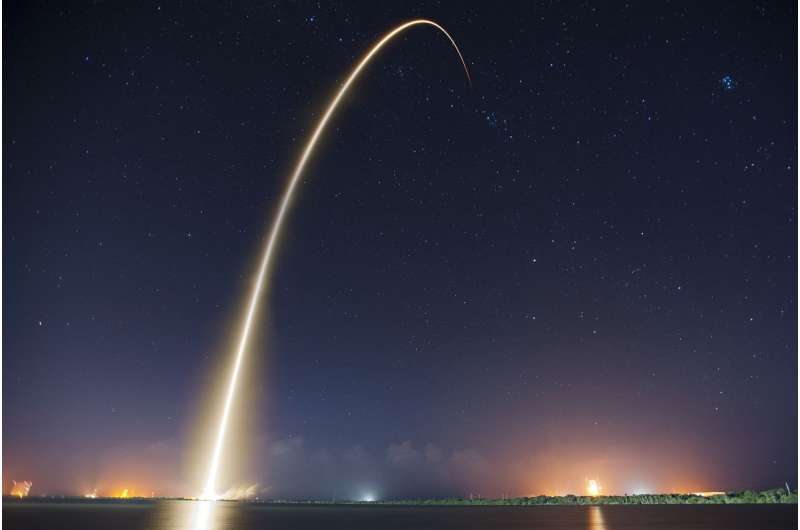
SpaceX is targeting its 50th Space Coast launch of the year with another Starlink mission from Cape Canaveral Space Force Station.
A Falcon 9 carrying 22 of the company's Starlink satellites is slated for liftoff from Canaveral's Space Launch Complex 40 at 10:45 p.m. with four backup opportunities from 11:38 p.m. until 1:57 a.m. overnight and six backup opportunities late Thursday from 10:29 p.m. until 1:49 a.m. early Friday.
Space Launch Delta 45's weather squadron forecasts a 50% chance for good conditions with 70% chance in event of a 24-hour delay.
The booster on this flight is making its eighth flight and will attempt a recovery landing on the droneship Just Read the Instructions in the Atlantic Ocean.
This would be SpaceX's 70th orbital launch of the year across all of its launch pads in Florida and California. It's the 40th from Cape Canaveral with the other 10 Space Coast launches coming from Kennedy Space Center.
SpaceX will have managed 50 of the 53 total Space Coast launches this year with two so far from United Launch Alliance and one from Relativity Space making up the rest.


